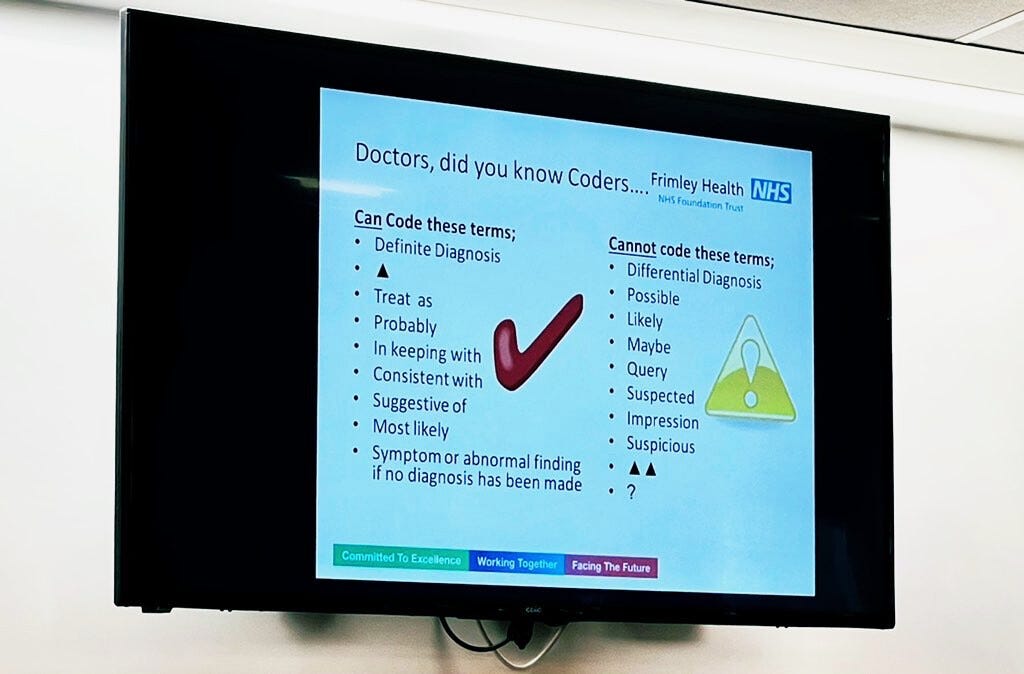I had an unexpected week... Food poisoning led to an emergency operation, which is thankfully all successfully sorted. However, it did mean that I spent quite some time watching this slide scroll across a waiting room screen, endlessly on repeat.
Setting aside the strangeness of a waiting room full of patients being shown some passive-aggressive Coder-Doctor communication that could have been an email, I was intrigued. With all due respect to the Coders, I think they're overstepping... I would absolutely prefer the doctor on the right to the one on the left. The Coders may be how the doctors get paid, but I worry about what this says about the process.
It may be subtle, but the left column talks to enforced premature specialisation. The doctor, quite rightly, is working her way through suspicion and differential diagnosis. The Coder, however, is nudging and saying, 'could you just edge up that confidence?' The two columns are presented as if they're synonymous, so y'know, just use 'better/ clearer' words, please... However, they're qualitatively different. The right column allows room for doubt, which the left column tuts at and says 'that's good enough, let's just go with your first thought.'
I wrote about path dependence a short while ago. One of the key problems of nudging up confidence levels early in a decision pathway is that it changes the confidence levels of subsequent, and often consequent, decisions. So, even though the Coders might get some easier stage metrics, to track flow through the system, they're not being measured on final outcomes. The column on the left leads to predictions, and therefore to confirmatory behaviour - the doctor on the right is looking to explore hypotheses. The charging database (even in the NHS) becomes the master, even if unintentionally.
Clearly, even though I was staring at this screen through a systemic infection fuzz, that reminded me of how the TPP and the linear Development process treats thoughtful pharma folk too: you're like the Doctor on the right, but the incentives are written by the Coders. Stage attrition, candidate numbers, 'successful' study rates, etc., are easy to code, but are set against better longer-term outcomes. You have a hunch that needs to be explored, but someone wants you to code with confidence - to pick a target and express a degree of certainty that the stage doesn't allow.
One of the challenges in pharma is that this 'database first' mentality is hard to unwind. Many companies have seen the benefit of Asymmetric Learning, but recognise that it challenges their traditional metrics - literally how companies are organised and how they're rewarded. However, there is no solution to such a tailspin - it self perpetuates, measuring itself into the ground. However, tracking one source of decision error, even if it's subtle, is critical if we're to focus on healthier patients - surely the goal of whoever is employing the Coder-Doctor teams who can't now talk to each other civilly and those running biopharma companies.



Very insightful! Could apply to many professions, to politics and to many processes, including performance management, portfolio management, and other areas desperate for absolutes. I see a book in the making.